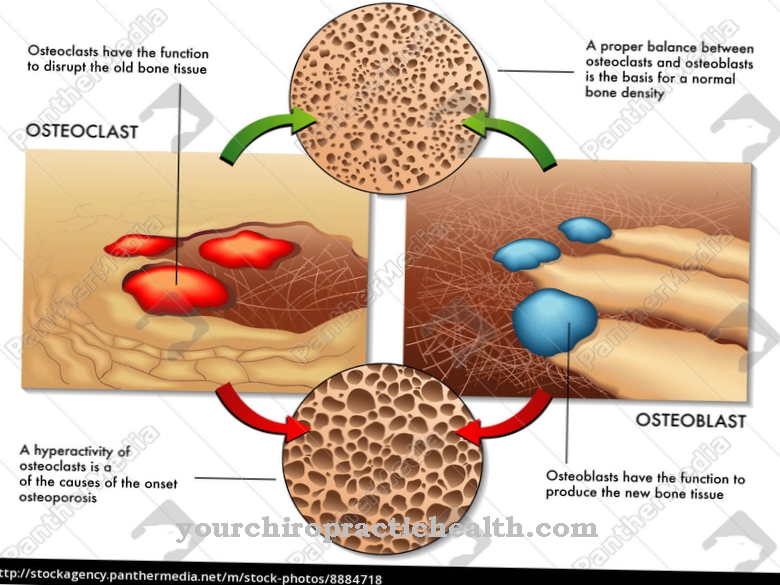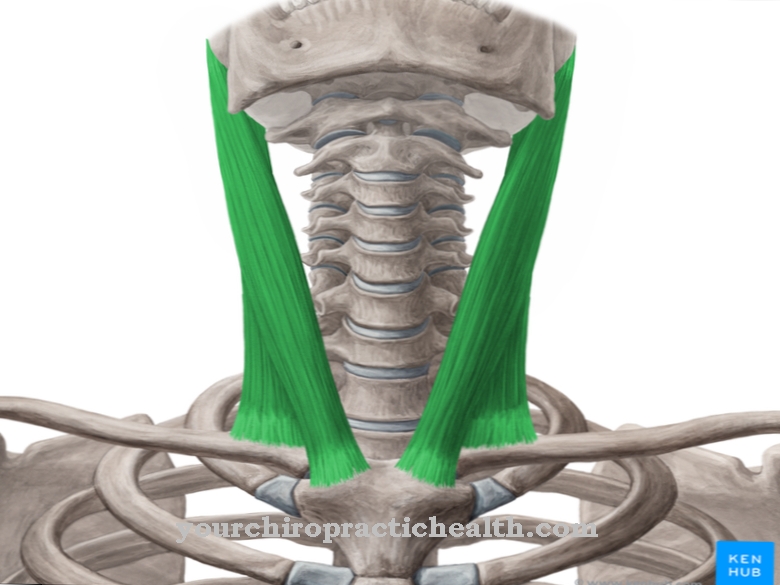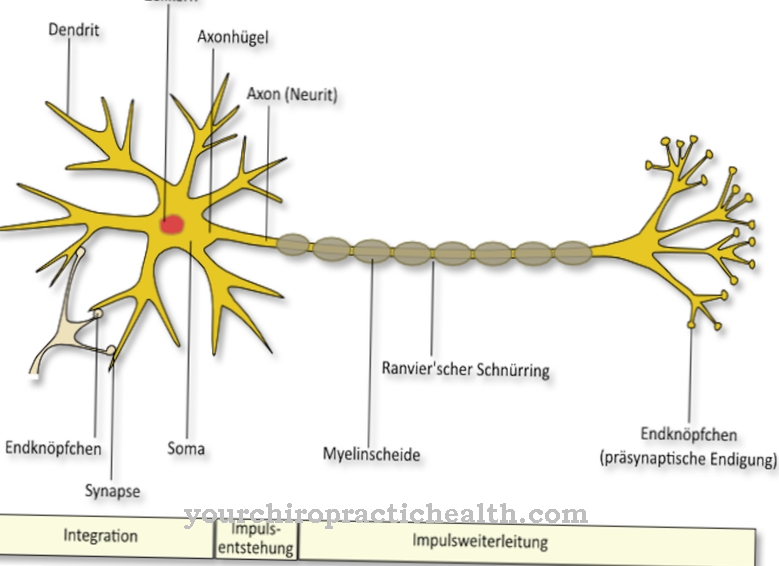As Sphenoid bone is called a skull bone. It is located in the central region of the skull.
What is the sphenoid bone?
The sphenoid bone is a bone of the brain skull that is located relatively deep in the middle section of the skull. The bone also bears the name Sphenoid bone or. Os sphenoides. Together with the occiput, the sphenoid bone serves to shape the base of the skull and the posterior orbital region.
The term Os sphenoidale is said to have come about in the Middle Ages through a monk's spelling mistake. The name Os sphekoidale, the Greek word for "wasp bone", became Os sphenoidale, the Greek name for "sphenoid bone". However, due to its wings, the skull bone is more like a wasp.
Anatomy & structure
The basic shape of the cuneiform bone is largely square. Inside there are two cavities that are separated from each other by a fence (septum). These spaces are called the sphenoid sinuses (Sinus sphenoidales). On the anterior sphenoid bone are the bilateral wings, which are called ala minor in humans.
They are relatively small and represent a part of the posterior eye socket. They are traversed by the optic canal. The optic nerve, the optic nerve, can pass through it. The course of the wings extends into an extension, which is called the anterior clinoid process. The cerebellar tent (tentorium cerebelli), which is part of the hard meninges, settles on the processes.
The wings of the posterior sphenoid (Ala major) are larger than the wings of the anterior sphenoid. The foramen ovale is housed in the wings. It acts as an exit for the mandibular nerve, which is part of the main branches of the 5th cranial nerve. In the foramen rotundum, however, there is the maxillary nerve, another branch of the 5th cranial nerve. The foramen spinosum occurs in the posterior wing of the sphenoid. The shaping allows the arteria meningea media to exit towards the cranial cavity. The superior orbital fissure, which is a gap-like opening, is positioned between the sphenoid wings. From this opening some cranial nerves run to the eye socket.
The middle cranial fossa, which is also called the Fossa cranii media, is formed by the wings of the posterior sphenoid bone (ala magna). The midbrain and the midbrain are housed in the middle fossa. A structure in the shape of a saddle is formed from the posterior body of the sphenoid bone. For this reason it is also called the Turkish saddle (Sella turcica). The hallmark of the Turkish saddle is a central pit. Inside it is the pituitary gland, also known as the pituitary gland. It is called the hypophysial fossa. The hypophysial fossa is covered by a split-off dura mater, the name of which is the diaphragm sellae. It separates the pituitary gland from the brain.
The sulcus chiasmatis is located in front of the sella turcica. This is a groove that acts as a junction of the optic nerves. The sphenoid sinus is also part of the sphenoid bone. It belongs to the sinuses.
Function & tasks
Historically, the sphenoid bone is composed of two bones, which are the anterior and the posterior sphenoid. Even before birth, however, the two bones fuse.
The sphenoid bone is considered to be the central bone of the craniosacral system. It has connections to almost all other skull bones, which is due to its unique anatomical structure. A direct connection to the hard palate is established via the wing processes, which adjoin the palatal bones.If the sphenoid bone is not aligned correctly, this can have a negative effect on the palate structures and thus also on the upper dentition and the jaw.
The pituitary gland, which rests directly on the sphenoid bone, is of particular importance. Via the endocrine system, it has a great influence on numerous physiological processes. A slight rocking motion of the sphenoid bone ensures that the warm blood is removed from the pituitary gland. This cooling is extremely important as even small increases in temperature can have a negative effect on the functions of the pituitary gland.
Diseases
Misalignments of the sphenoid bone affect numerous areas of the human body. Excessive pressure on the ganglia between the sphenoid alar processes and the palatal bone affects the nasal mucous membranes because, like the nasal cavities and nasopharynx, they are innervated by the ganglia. This is noticeable through runny nose or rhinorrhea. Some people then also react more sensitively to allergens that they inhale.
Disturbances of the sphenoid bone often also affect the pituitary gland. For example, misalignment of the skull can affect the cooling of the pituitary gland. The pituitary gland is located outside of the brain because it needs a cooler environment than the brain. But the temporomandibular joint can also be affected by problems with the sphenoid bone. The external wing muscles of the sphenoid bone have direct effects on the lower jaw. An imbalance in the muscles therefore negatively affects the position of the sphenoid bone. If its position changes, this leads to disturbances in the functions and movements of the sphenoid bone. Visual disturbances come into consideration as a possible consequence of malpositions. In this way, structures of the eye socket are sometimes formed by the sphenoid bone. In addition, cranial nerves, which affect eye movements and visual acuity, run through the sphenoid bone.
The fracture of the base of the skull is one of the most common injuries to the sphenoid bone. The sphenoid bone is part of the base of the skull, which often damages it due to a corresponding fracture.
























.jpg)



